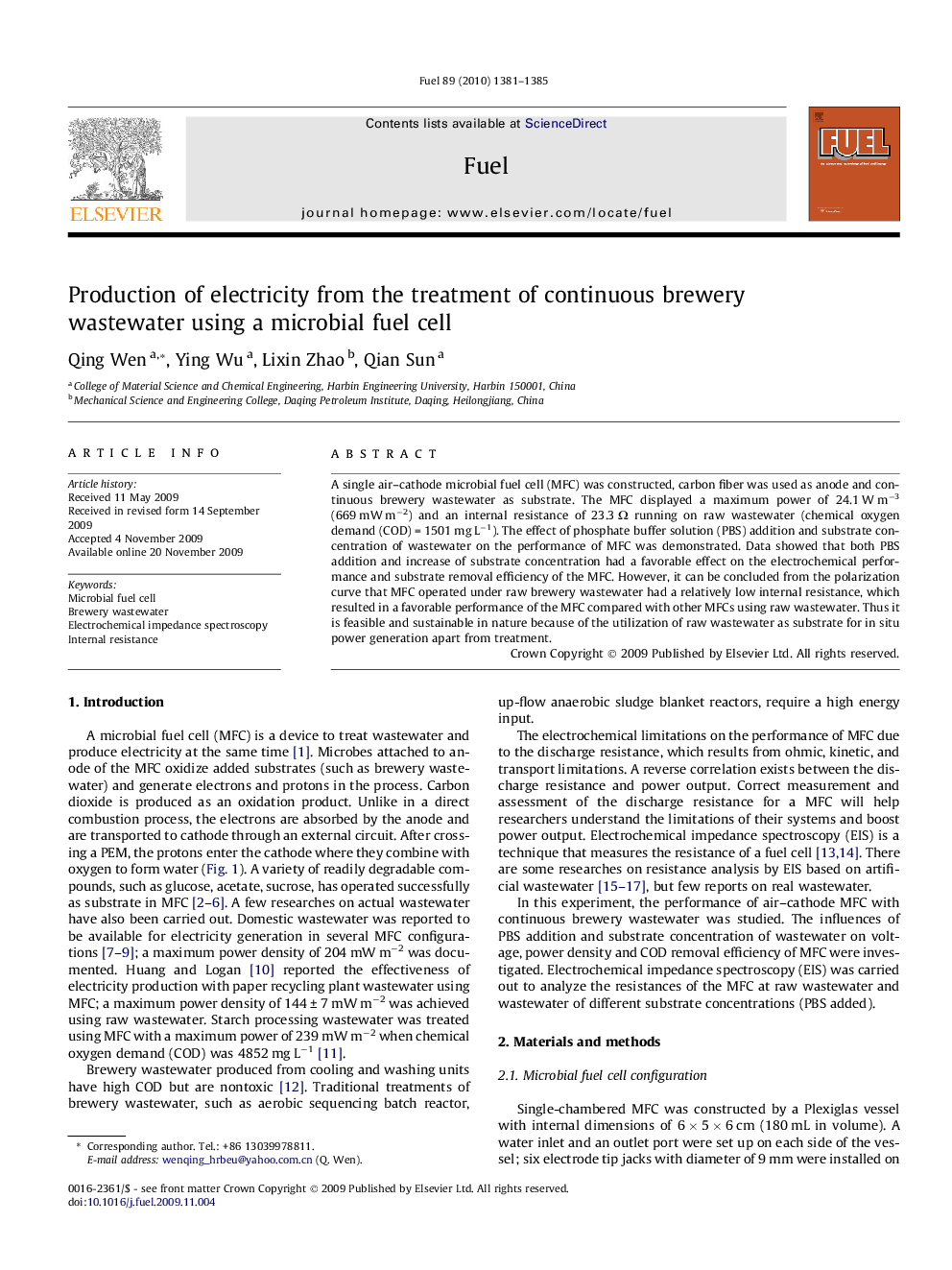| Article ID | Journal | Published Year | Pages | File Type |
|---|---|---|---|---|
| 207311 | Fuel | 2010 | 5 Pages |
A single air–cathode microbial fuel cell (MFC) was constructed, carbon fiber was used as anode and continuous brewery wastewater as substrate. The MFC displayed a maximum power of 24.1 W m−3 (669 mW m−2) and an internal resistance of 23.3 Ω running on raw wastewater (chemical oxygen demand (COD) = 1501 mg L−1). The effect of phosphate buffer solution (PBS) addition and substrate concentration of wastewater on the performance of MFC was demonstrated. Data showed that both PBS addition and increase of substrate concentration had a favorable effect on the electrochemical performance and substrate removal efficiency of the MFC. However, it can be concluded from the polarization curve that MFC operated under raw brewery wastewater had a relatively low internal resistance, which resulted in a favorable performance of the MFC compared with other MFCs using raw wastewater. Thus it is feasible and sustainable in nature because of the utilization of raw wastewater as substrate for in situ power generation apart from treatment.
